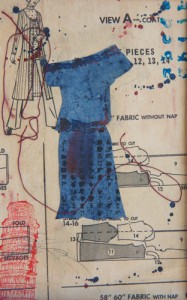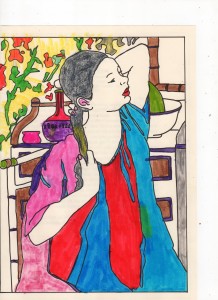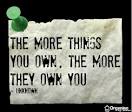A MONTH WITH SERENITY, INTELLIGENCE AND SOME DOWNRIGHT SILLINESS
I am so thankful for Goodreads and Kindle. I try to record the books as I read them in Goodreads, but sometimes I have to rely on the books I have downloaded on Kindle. The reason? I actually read a couple of books in February that I needed to read the recap in Goodreads to remember them! February was all over the board! (in categories and quality both).
 Chaser, Unlocking the Genius of the Dog Who Knows a Thousand Words by John W. Pilley: Surprisingly, I picked this up at the grocery store while stocking up for a non-existent upcoming winter storm. Who could resist that face? John Pilley is a retired psychology professor in South Carolina. When he adopts Chaser he begins exploring communication and language with her. In the end, Chaser knows over a thousand words and demonstrates an intelligence that is remarkable. The training is 4-6 hours a day and done in the spirit of play. It will make you look at your dogs differently! As a dog owner and lover I usually don’t read books about animals. But – Chaser is alive and well in Spartanburg, S.C. While there is a fair amount of scientific research in the book, I still enjoyed it!
Chaser, Unlocking the Genius of the Dog Who Knows a Thousand Words by John W. Pilley: Surprisingly, I picked this up at the grocery store while stocking up for a non-existent upcoming winter storm. Who could resist that face? John Pilley is a retired psychology professor in South Carolina. When he adopts Chaser he begins exploring communication and language with her. In the end, Chaser knows over a thousand words and demonstrates an intelligence that is remarkable. The training is 4-6 hours a day and done in the spirit of play. It will make you look at your dogs differently! As a dog owner and lover I usually don’t read books about animals. But – Chaser is alive and well in Spartanburg, S.C. While there is a fair amount of scientific research in the book, I still enjoyed it!
Turning the Mind into an Ally by Sakyong Mipham : This was suggested reading for a meditation course I took at the Shambhala center down the street. Mipham was raised in the West, so the book is written in easy to read idiomatic English. He believes to lead a sane and peaceful life, we need to train our minds, and without doing this we become “at the mercy of our moods”. There are a few appendices that show meditation postures and give easy to follow instructions. It takes the mysticism out of both meditation and Buddhism. An added treat is the forward that is written by Pema Chodron. By the way, Mipham is the director of Shambhala International that is over 165 meditation centers (founded by his father). I will keep this book and refer back to it. While I still struggle with meditating daily, I have not given up! I signed up for another class beginning next week – Contentment in Everyday Life. This is part of the description of the class:
To be content is to know what is sufficient.
To know what is sufficient we must know ourselves.
To know ourselves we must be willing to look into ourselves.
To look into ourselves we must engage with gentleness and bravery, and
in this manner we make friends with whatever we see.
Coaching Questions: A Coach’s Guide to Powerful Asking Skills by Tony Stoltzfus: In 2014, I became a certified life coach, but I’m still in training mode. I recently took on my first “practice” clients (or ally’s as I prefer to call them). To ask powerful questions is one of the two most powerful things to learn (the other is to effectively listen). This is a reference tool I will refer back to. Coaching helps guide one in the right direction, helps them realize their dreams and begin achieving their life goals. After all, we all have the power within us – as one of my favorite quotes below illustrates.
To Catch a Bad Guy by Marie Astor: This was a free download that I read on a dismal wintery afternoon. I downloaded it because it had a picture of a cute dog on the front. I barely remember the story though – need I say more?
 From the Ground Up, A Love Story about Fame and Farming by Janet J. Lawley: Another free download – this one is about an out of control Hollywood actress (think Lohan). After she crashes her car into Saks, a judge sends her to an organic farm in upstate New York to work. It is kind of cute, but very very predictable.
From the Ground Up, A Love Story about Fame and Farming by Janet J. Lawley: Another free download – this one is about an out of control Hollywood actress (think Lohan). After she crashes her car into Saks, a judge sends her to an organic farm in upstate New York to work. It is kind of cute, but very very predictable.
Still Life with Murder by P.B. Ryan: Set in Boston after the Civil War, there are some interesting elements in this book. It follows Nell Sweeney – born into poverty now working for a very wealthy family. There are two sons they believe died in the Civil War. When the black sheep, also a physician, returns secretly addicted to opium, he is accused of a murder. Nell begins proving his innocence, and it takes you back to the terrible Andersonville. Interesting historical setting and a few twists along the way.
Hollywood Assassin, A Hollywood Alphabet Series Thrille by MZ Kelly: I love books about the history of Hollywood, and this one promised this. Detective Kate Sexton is being stalked as she puts together the pieces of a 30 year old cold case. I should have caught the line in the promo (another free download) saying it “has more twists and turns than a car on Sunset Strip with a Hollywood starlet at the wheel.” and by an author named MZ? I guess that is for MIZZ??? But, I have to admit, I did read it!
For March, I am assembling a better quality of books – that doesn’t mean I’ll won’t read some quick simple download along the way.



















